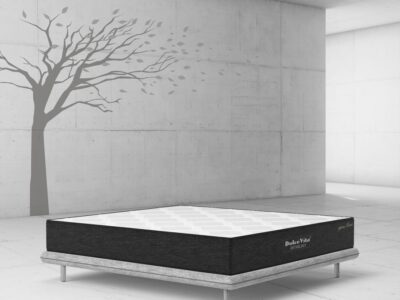
Comme des Garçons, the iconic Japanese fashion label founded by Rei Kawakubo in 1969, has continuously challenged and redefined the norms of the fashion industry. With its avant-garde aesthetics, radical designs, and thought-provoking collections, Comme des Garçons has established itself as a pioneering force in contemporary fashion. This article delves into the brand’s origins, design philosophy, significant collections, collaborations, and lasting impact on the global fashion landscape.
Origins and Early Development
Rei Kawakubo, born in Tokyo in 1942, initially studied fine arts and literature at Keio University. Her background in these disciplines significantly influenced her unconventional approach to fashion design. Kawakubo began her career as a stylist before founding Comme des Garçons, a name that translates to “like boys” in French, in 1969. The brand’s early years were marked by a distinctive aesthetic that emphasized deconstruction, asymmetry, and monochromatic color schemes, setting it apart from traditional Japanese fashion of the time.
In 1973, Kawakubo established her first boutique in Tokyo, and by the late 1970s, Comme des Garçons had garnered a dedicated following in Japan. The brand’s international breakthrough came in 1981 when it made its Paris Fashion Week debut. The collection, characterized by its stark, black garments and unconventional silhouettes, shocked and captivated the fashion world, heralding a new era of avant-garde fashion.
Design Philosophy
Comme des Garçons’ design philosophy is rooted in challenging conventional beauty standards and exploring the interplay between fashion and art. Rei Kawakubo’s creations often defy traditional notions of form, function, and aesthetics, inviting viewers to question and reinterpret the concept of clothing.
Kawakubo’s designs frequently feature asymmetry, raw edges, and unusual fabric combinations. Her collections explore themes such as gender fluidity, identity, and the human body. The Spring/Summer 1997 collection, titled “Body Meets Dress, Dress Meets Body,” is a prime example of this approach. The collection featured padded garments that distorted the body’s natural shape, sparking conversations about beauty, femininity, and the societal expectations placed on women.
Kawakubo’s refusal to conform to industry norms is evident in her approach to fashion shows. Unlike traditional runway presentations, her shows often resemble performance art pieces, with models walking in unison or interacting with the audience. This unconventional approach emphasizes the conceptual nature of her work and reinforces the idea that fashion can be a form of artistic expression.
Significant Collections
Comme des Garçons’ collections are renowned for their innovative and often provocative designs. Some of the most notable collections include:
- Spring/Summer 1982: This collection, known for its “Hiroshima chic” aesthetic, featured oversized, deconstructed garments in black and gray. The use of tattered fabrics and asymmetrical cuts challenged traditional notions of beauty and luxury, marking a departure from the polished, glamorous fashion of the time.
- Spring/Summer 1997: Titled “Body Meets Dress, Dress Meets Body,” this collection showcased padded garments that distorted the body’s natural shape. The exaggerated silhouettes and unconventional forms sparked debates about beauty standards and the relationship between clothing and the human body.
- Autumn/Winter 2012: This collection, named “The Infinity of Tailoring,” reinterpreted classic menswear tailoring through an avant-garde lens. Kawakubo played with proportions, layering, and unexpected fabric combinations, resulting in a series of striking, sculptural looks.
- Spring/Summer 2014: The “Blood and Roses” collection featured bold red and black garments adorned with three-dimensional floral appliqués. The collection juxtaposed the beauty of roses with the violence of blood, exploring themes of love, pain, and sacrifice.
Collaborations and Diffusion Lines
Comme des Garçons has a long history of collaborations with other designers, brands, and artists. These partnerships often result in limited-edition pieces that blend Kawakubo’s avant-garde vision with the collaborator’s unique style. Notable collaborations include:
- Comme des Garçons x Nike: The collaboration produced a range of innovative footwear, blending Nike’s athletic technology with Comme des Garçons’ avant-garde design sensibility.
- Comme des Garçons x Louis Vuitton: This partnership resulted in a series of limited-edition bags that combined Louis Vuitton’s luxury craftsmanship with Comme des Garçons’ unconventional aesthetic.
- Comme des Garçons x H&M: This high-profile collaboration brought Comme des Garçons’ avant-garde designs to a broader audience, offering more affordable pieces that retained the brand’s signature style.
In addition to collaborations, Comme des Garçons has several diffusion lines that cater to different markets and price points. These include:
- Comme des Garçons Play: Known for its iconic heart logo, this line offers casual, everyday pieces with a playful twist.
- Comme des Garçons Homme: Focused on menswear, this line combines classic tailoring with avant-garde elements.
- Comme des Garçons Noir: This line emphasizes a monochromatic palette and minimalist designs, reflecting Kawakubo’s early work.
Retail Presence and Expansion
Comme des Garçons operates flagship stores worldwide, each designed to reflect the brand’s innovative spirit. These stores often feature minimalist, industrial interiors that provide a stark contrast to the vibrant and unconventional garments on display. Notable flagship locations include:
- Dover Street Market: Founded by Rei Kawakubo and her husband Adrian Joffe, Dover Street Market is a multi-brand retailer that showcases Comme des Garçons alongside other cutting-edge designers. With locations in cities like London, New York, and Tokyo, Dover Street Market has become a hub for fashion innovation.
- Comme des Garçons Aoyama: Located in Tokyo’s upscale Aoyama district, this flagship store features a striking, modern design and offers the full range of Comme des Garçons collections.
- Comme des Garçons New York: Situated in Chelsea, this store reflects the brand’s avant-garde aesthetic with its minimalist interior and curated selection of garments.
Legacy and Impact
Rei Kawakubo’s work with Comme des Garçons has left an indelible mark on the fashion industry. Her fearless approach to design and her ability to challenge norms have solidified her status as one of the most influential designers of our time. Comme des Garçons continues to be a beacon of creativity and innovation, inspiring both established designers and emerging talents.
In 2017, Kawakubo was honored with a solo exhibition at the Metropolitan Museum of Art’s Costume Institute, making her the second living designer to receive such recognition. The exhibition, titled “Rei Kawakubo/Comme des Garçons: Art of the In-Between,” showcased the designer’s groundbreaking work and highlighted her contributions to the world of fashion.
Conclusion
Comme des Garçons is more than just a fashion brand; it is a cultural phenomenon that has consistently defied expectations and redefined the boundaries of fashion. Under Rei Kawakubo’s visionary leadership, the brand continues to challenge the status quo, offering a unique perspective that blends art, fashion, and philosophy. As Comme des Garçons moves forward, it remains a powerful force in the industry, inspiring future generations to embrace creativity and innovation.
By consistently pushing the envelope and refusing to conform to traditional fashion norms, Comme des Garçons has secured its place as an enduring icon in the world of fashion. The brand’s commitment to challenging conventions and exploring new frontiers ensures that it will continue to influence and inspire for years to come.











